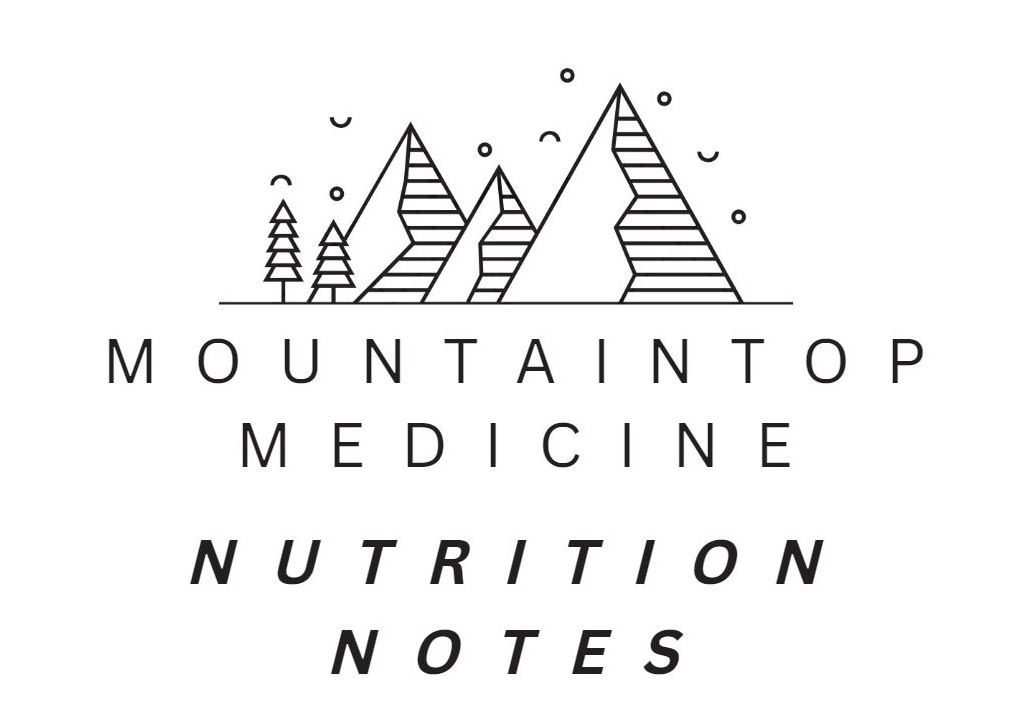Mountaintop Medicine: Nutrition Notes — What is Anemia?

Hello there! For this week’s topic on Nutrition Notes, I want to discuss anemia- what it is and how the foods we eat can help us avoid it.
Anemia is a condition where you have a lower-than-normal amount of red blood cells. When this happens, our organs and tissues have a tough time getting oxygen, causing us to show symptoms of weakness, fatigue, and shortness of breath. Our red blood cells carry oxygen to our organs and tissues and contain an iron-rich protein called hemoglobin, which binds oxygen in our lungs. This allows red blood cells to carry and deliver it throughout our body- as every part of our body needs a sufficient supply of oxygen to function properly. There are several different types and causes of anemia, some more mild while others can cause serious health problems.

Leah Gardner, EPH Registered Dietitian
What causes anemia?
Causes of anemia include iron, vitamin B12, or folate deficiency, chronic diseases like kidney disease, some types of cancer, HIV, tuberculosis, hypothyroidism, ulcerative colitis or Crohn’s disease, and use of certain medications such as chemotherapy and radiation therapy for cancer treatment. Even blood loss because of accidents or injuries, surgeries, heavy menstrual bleeding, and childbirth can lead to anemia.
Risk Factors
Certain risk factors that may increase risk of developing anemia are:
· Eating a diet lacking sources of iron, folate, or vitamin B12
· Having a menstrual period
· Pregnancy
· Being 65 years old or older
· Chronic health conditions like cancer, kidney disease, liver disease, or an autoimmune disease
· Family history of anemia
· Undergoing chemotherapy or radiation therapy
· Heavy consumption of alcohol
· Frequent exposure to toxic chemicals
Symptoms
Many symptoms associated with anemia are due to a lack of oxygen being supplied throughout our body. The most common symptoms include fatigue, weakness, lightheadedness and
dizziness especially when active or standing up, headache, shortness of breath, having pale skin, gums, or nails, having cold hands and feet, a quick or irregular heartbeat, trouble concentrating, fainting, and unusual cravings such as wanting to eat ice, clay, or dirt.
Types of Anemia
1. Iron-deficiency anemia: This is the most common type of anemia. It occurs when your body does not have enough iron to produce sufficient red blood cells. It can be caused by a lack of iron in your diet, blood loss, or an inability to absorb iron properly. Treatment often involves iron supplements and dietary changes.
2. Vitamin-deficiency anemia: This type of anemia can be caused by a deficiency in certain vitamins, such as vitamin B12 or folate. These vitamins are necessary for producing healthy red blood cells. Vitamin-deficiency anemia can occur due to poor diet, malabsorption issues, or certain medical conditions. Treatment usually entails vitamin supplements and dietary adjustments.
3. Sickle cell anemia: This is a genetic condition where the red blood cells have an abnormal shape, resembling a sickle. These misshapen cells can get stuck in blood vessels, leading to pain, organ damage, and a reduced lifespan of red blood cells. Sickle cell anemia is inherited and requires ongoing medical management. Treatment approaches to this type of anemia include pain management, the medications that increase the production of hemoglobin that prevent sickling of red blood cells, blood transfusions, and bone marrow transplants.
Nutrition Therapies for Anemia
Iron-rich foods: Consuming foods high in iron can help address iron-deficiency anemia. Good sources of iron include red meat, poultry, fish, beans, lentils, spinach, and fortified cereals. Pairing iron-rich foods with vitamin C-rich foods, like citrus, strawberries, tomatoes, broccoli, and bell peppers can enhance iron absorption. The recommended daily iron intake for adults ages 19 to 50 is 8 mg per day for men and 18 mg per day for women. Pregnant women should consume at least 27 mg of iron daily and 9 mg per day while breastfeeding.
Vitamin B12 and folate: If you have vitamin-deficiency anemia, incorporating foods rich in vitamin B12 and folate is important. Examples include eggs, dairy products, fortified cereals, leafy green vegetables, and legumes. The recommended daily vitamin B12 intake is 2.4 mcg, 2.6 mcg daily for pregnant women, and 2.8 mcg per day for those who are breastfeeding. The recommended daily intake of folate is 400 mcg per day and increases to 600 mcg per day if pregnant or breastfeeding.
Avoidance of certain substances: Some substances can hinder iron absorption, such as caffeine, and tannins found in tea and coffee. It is best to consume these in moderation or separate from iron-rich meals.
Anemia can cause serious complications if left untreated. It is important to talk to a healthcare professional if you have symptoms of anemia. I offer outpatient nutrition counseling and education services at Estes Park Health. If you are interested, contact your healthcare provider for a referral. If you have any questions or if there are any nutrition-related topics that you would like me to discuss here on Nutrition Notes, please reach out at LGardner@EPH.org.


